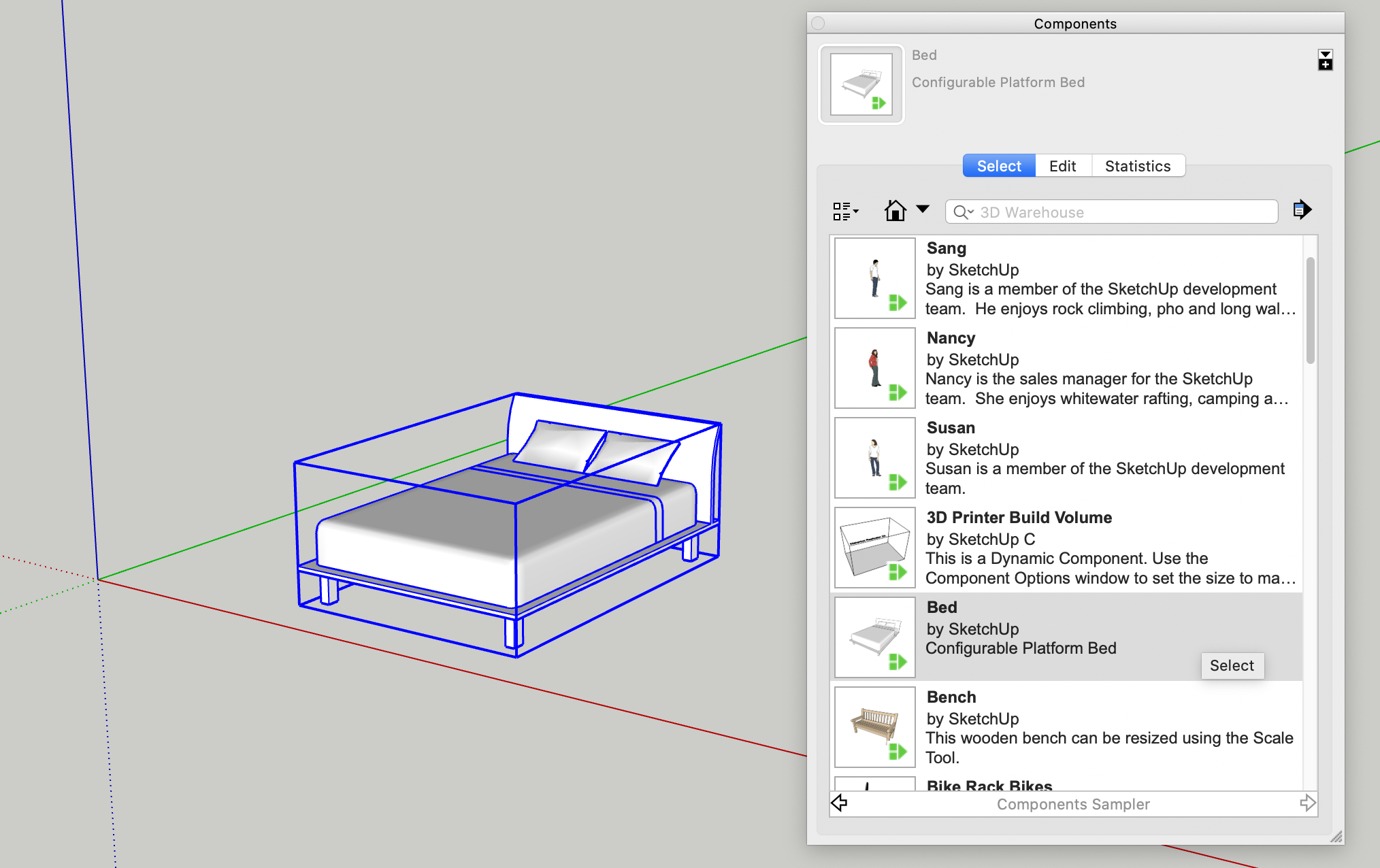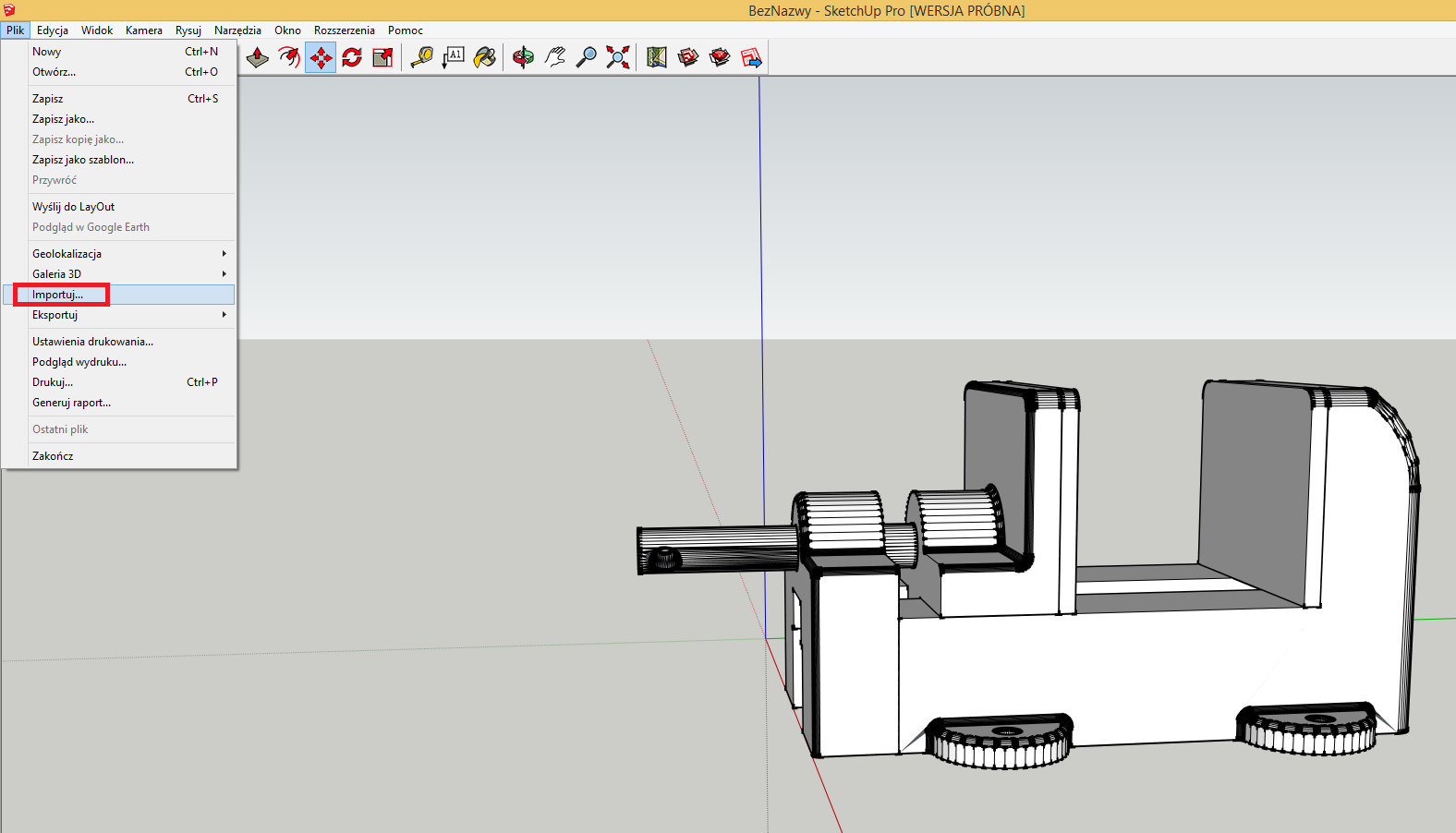
- Sketchup make components solid how to#
- Sketchup make components solid pro#
- Sketchup make components solid license#
Then, right-click before choosing the “Flip Along” option.Next, similar to the Scale tool, create a duplicate by copying and pasting the object (Ctrl + Move).To get started, select the object you want to mirror.To mirror an object in SketchUp using the Flip Along command, follow these steps below: Using the Flip Along Command to MirrorĪnother way to mirror in SketchUp is to use the “Flip Along” command. Together, these techniques give you a lot of control over the look and feel of your SketchUp design. To do so, simply enter a positive number to increase the size of an object or a negative number to decrease it. Keep in mind that you can also use the Scale tool on SketchUp to resize objects, not just mirror them. Repeat the process for each object you want to mirror. After that, press the Enter button to confirm the change and exit the Scale tool.With the duplicate selected, click on Scale and enter a negative number (e.g., -1).Next, position the duplicate where you want the mirror image to appear.Then, copy and duplicate the object (Ctrl + Move).First, select the object you want to mirror.
Sketchup make components solid how to#
Here’s how to use the SketchUp Scale tool to mirror an object: It’s easy enough for SketchUp novices to pick up yet versatile enough for designers working on more complex projects. Out of them all, the SketchUp Scale tool is by far the most popular. However, there are several ways to mirror objects and geometry using the existing tools in Sketchup. Unlike other 3D design programs, Sketchup does not have a dedicated “mirror” tool. We’ll also share with you some useful tips like how to mirror geometry in SketchUp without losing its original position, how to mirror a group of objects, and more. In this article, we’ll discuss how to mirror in SketchUp using several methods, including the Scale Tool, the Flip Along command, and various extensions. It’s also an excellent way to check for errors in your design since any mistakes will be immediately obvious when viewed in reverse. User Guides, FAQs, Community Support and More…Įverything you ever wanted to know about BoolTools is now available at our first-class Help Desk.Mirroring and flipping objects in Sketchup is a quick way to create variation in your CAD design and make it stand out.
Sketchup make components solid pro#
The Pro Solid Tools has also had some other long-standing limitations that we have improved on with BoolTools. That’s why so many Solid Tools users have adopted the copy and ‘scale-up’ workflow to prevent their Solid Tool operation from failing. Even the Pro Solid Tools struggles with this problem. Successful boolean operations depend on high-precision 3D intersections, something that the internal SketchUp geometry engine struggles with at times. However, it definitely had some limitations, especially when it came to dealing with smaller complex objects. The original BoolTools plugin was indeed useful and helped fill a necessary need in the SketchUp toolset for many years (especially for Make users).

After all, the Pro Solid Tools did not exist yet, and no one even knew that SketchUp was considering creating this long-requested feature. This tool provided an inexpensive way to perform some basic boolean operations and worked with both SketchUp Make (free) or Pro.

To request a volume licensing discount, please contact us.Ībout 20 months before SketchUp Pro 8 released the Solid Tools, (way back in Dec 2008!), the original BoolTools plugin for SketchUp was released.
Sketchup make components solid license#
Purchase a permanent license for BoolTools 2 now for only $29 US.įor volume licensing, simply enter the number of licenses required in the order form.



 0 kommentar(er)
0 kommentar(er)
